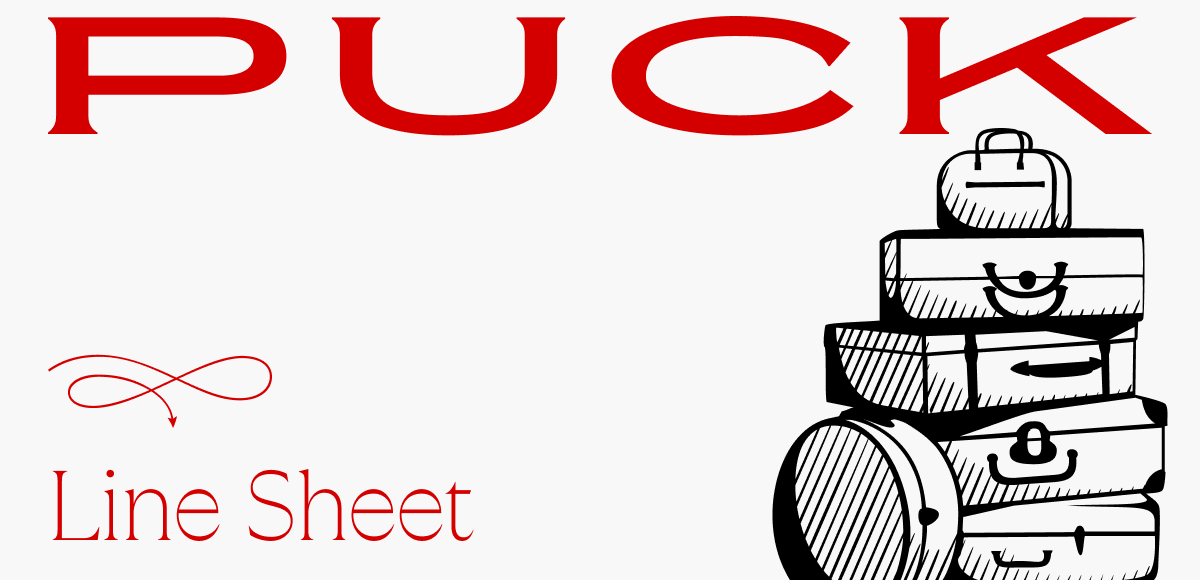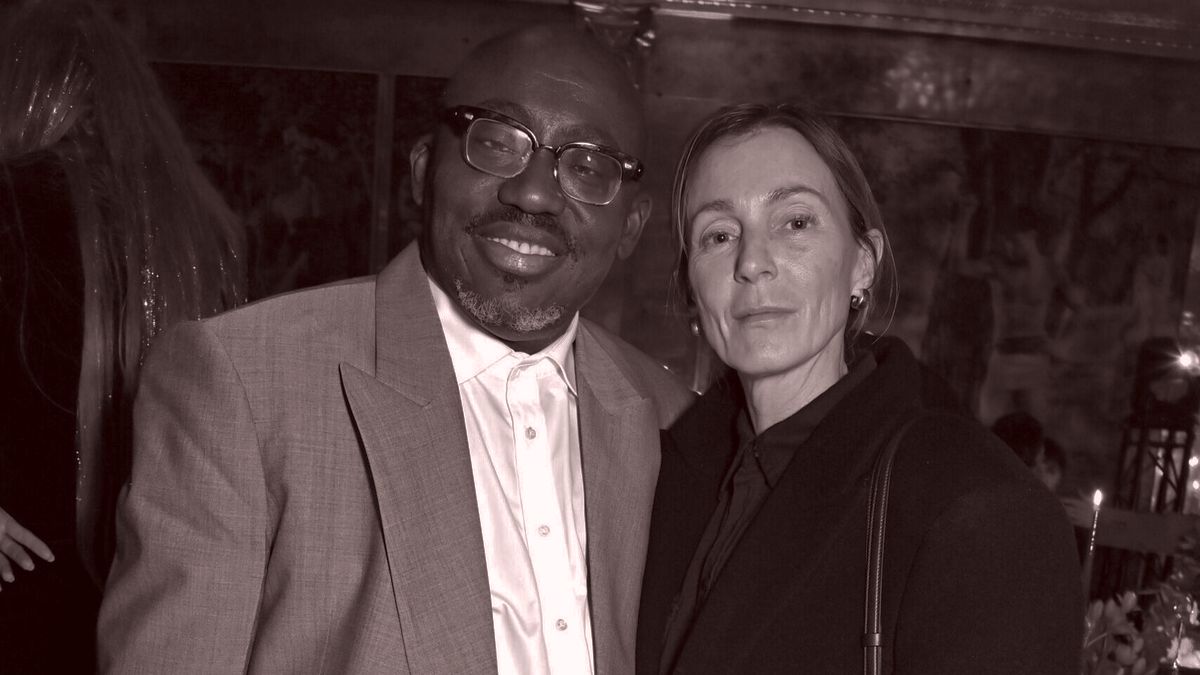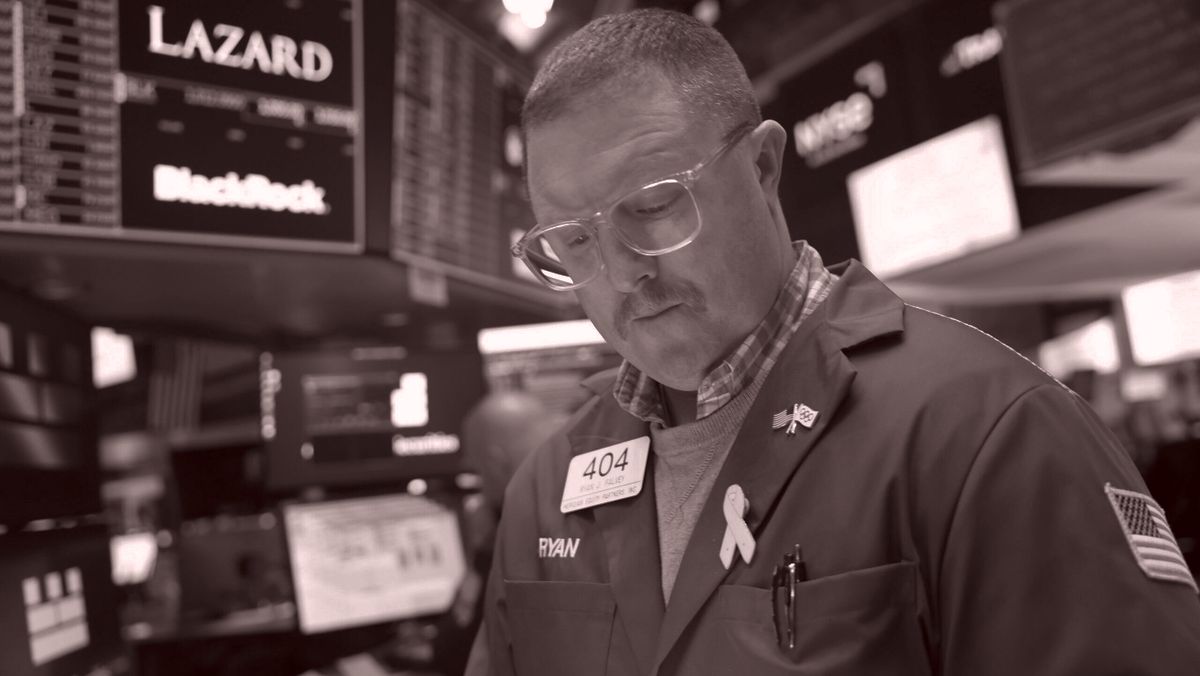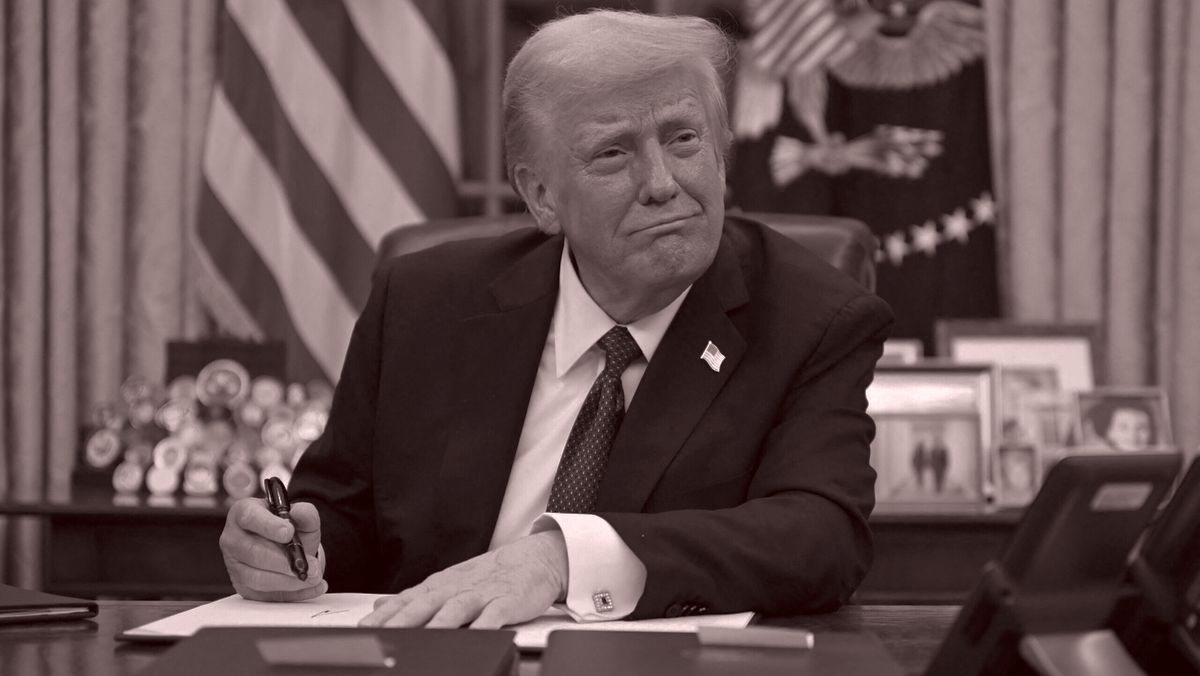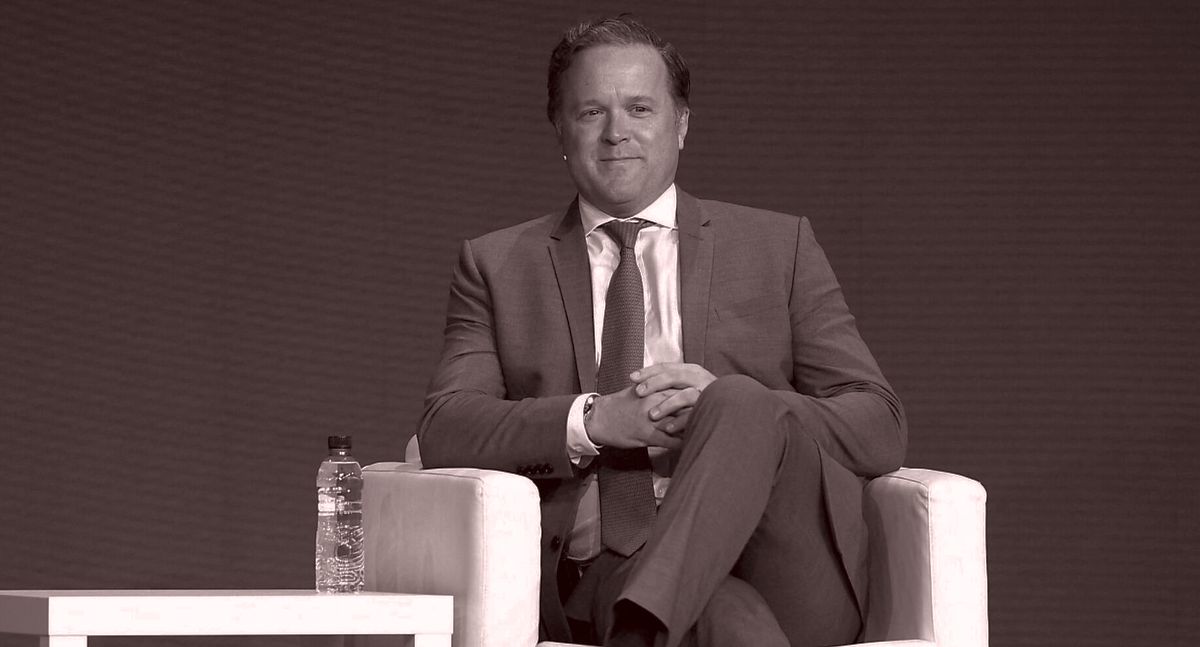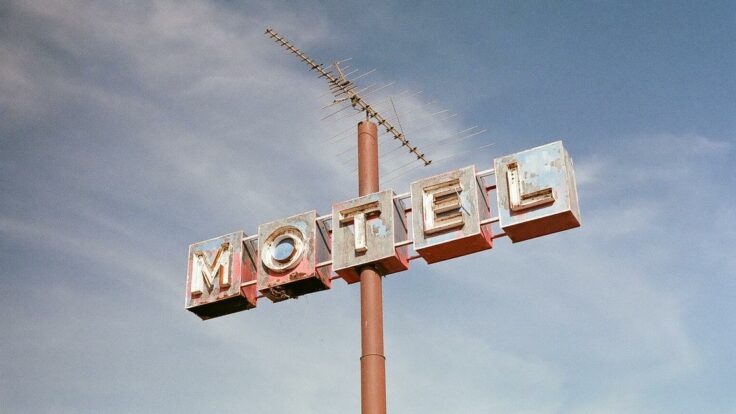Hi, and welcome to Line Sheet. I’m back in Los Angeles after a high-speed
trip to New York: I tried on clothes (at BG, The Consistency Project, and La Garçonne), watched the Betty Gilpin takeover of Oh, Mary! (love her), received a quickie tarot card reading (accurate), got the best facial of my life (thank you, Crystal Greene), and road-tested the
Republican blowout (book Roz).
On the subject of Republicans, most of my conversations last week—with media, retail, and luxury executives—were about the new administration in Washington. So today I’m going to share how fashion people are feeling. I also investigate Hearst’s
peculiar, under-the-radar partnership with Substack. Plus, as a treat, friend-of-Line-Sheet (and Soft Power author) Marisa Meltzer is making a very special guest appearance with a dispatch from the Willy Chavarria show in Paris. For the main event, I checked in on Phoebe Philo Limited—where, in typical startup fashion, change is almost always afoot. Sorry, I didn’t
have room to discuss Taylor Swift’s most recent abominable outfit. Perhaps we’ll get into her unfathomable, unsuccessful turn upmarket tomorrow.
As for the news that LVMH is divesting from
Stella McCartney after five years (via Reuters), just know that I first reported on this back in October 2024 and was told by a rep for LVMH
that it was… “fake news.” More later this week!
🚨🚨 Programming note: Tomorrow on Fashion People, The New York Times’s Jacob Gallagher is back to discuss the best (and worst?) of the men’s shows, the general vibe during Couture, and whether I (and you) should start exclusively
wearing Auralee. Listen here and here.
Mentioned in this issue: Phoebe Philo, The Row, Céline,
Miranda July, Halina Reijn, Nicole Kidman, Stephen Sprouse, The Frankie Shop, LVMH, Delphine Arnault, Bergdorf Goodman, Max Wigram, Patrik Silén, Chantal Warner, Bruno Sialelli, Loewe, Lanvin, Jonathan Anderson, Moschino, Adrian Appiolaza, Alexander McQueen, Seán McGirr, Alessandro
Michele, Gucci, Alessandra Facchinetti, and much more…
|
Three Things You Should Know…
|
- Fashion kisses the gold-plated, extremely gauche ring: Last week a C.E.O. texted me, worried sick over Trump and tariffs. Another person was outraged that Suzy Menkes praised Melania’s Adam Lippes suit, and someone else was angry at me for covering—or even acknowledging—fashion’s growing relationship with the administration. Then there was the liberal C.E.O. who told me he wished he had voted for Trump, because at
least he seems to be getting stuff done.
Perhaps time will prove that Michelle Obama, who bailed on the inauguration, was the only person on the right side of history. But as I wrote last week, more folks in fashion are falling in line with Trump because it’s the easier thing to do, and many believe it’s also the
necessary thing to do. Of course, the Arnaults want to placate Trump so that he won’t apply a tariff to any of the many products they ship to the U.S. In a sense, they’re doing the dirty work of the industry at large: Who else is rich and famous enough to keep Trump’s attention?
The Arnaults, and several European executives who are more familiar with this style of politics, see Trump as a purely transactional businessman. “It might sound crazy,” one
high-level European executive told me, “but, here, everyone is genuinely happy. They believe business will be better, and everyone is tired of the hypocrisy of the left and the Democrats. And the woke movement went too far.” Let’s see how Trump reacts to their overtures. My biggest takeaway from two days in New York is that business is tough, tough, tough right now for most companies. If that requires C.E.O.s to toe the line, they will.
Another friend, who works in media, wondered how
Vogue would handle the new administration, given Anna Wintour’s active role in fundraising for the Democratic Party and her personal relationship with the Bidens. Last week, as I watched many consumer outlets—including Vogue—near-breathlessly cover the wares of the Trumps and Vances, I wondered whether we might see Ivanka Trump or Usha Vance on a cover someday soon. (Melania is a nonstarter.) My
assessment is that it simply wouldn’t be worth it, not because of reader outrage, but the inevitable backlash from staff. Wintour enlists her Vogue team to help her out on extracurricular activities, including the Met Gala and various political affairs, which indirectly means that many of them—although not all—are self-selecting Democrats. It’s easy to see them getting disgruntled about this in a way they normally don’t. (Wintour is generally beloved by her current staff.) Also, there’s
little upside: Covers featuring political figures, or their spouses, feel dated. Really, in any context, covers don’t matter anymore, anyway. (Except at New York magazine.)
- Hearst x Substack?: A friend noticed that Hearst’s Elle magazine has been engaging with Substack, the newsletter company, hiring its authors to write pieces to accompany otherwise wordless fashion spreads online. In September 2024, for instance, Elle
commissioned Earl Earl writer Laurel Pantin to write about the “life-changing magic of a little black dress,” featuring images of a print shoot styled by Alex White. The partnership is ongoing, and the writers are being asked to do a “collab post” on Instagram as well.
Turns out that these pieces, written by the likes of Pantin and
Shop Rat’s Emilia Petrarca, were brokered by Substack, but the writers were paid by the word via Elle. (A rep for Substack told me that no money was exchanged between the two companies.) In some ways, this feels like a bespoke version of a traditional low-dollar (or zero-dollar) content-swapping partnership, like the way BoF runs Bloomberg stories. What’s unique here is
that Hearst is giving Substack top billing on each story, and paying its writers directly.
Of course, Elle could easily commission the writers itself—most of them freelance for a variety of publications—so you have to assume that Substack is testing a new distribution channel and Elle is just desperate to try anything. In the meantime, I guess the benefit to Elle is that the Substack writers will link to Elle.com, and the benefit to the Substack writers is that
Elle.com will link to the newsletter. (Most of the basics reading the website will have never heard of Substack.) The other benefit to Elle is that they can get more impressions on their fashion shoots, which are still expensive, even if they’re much cheaper than they used to be. As for what either side was thinking beyond that… feels like a lot of work for not a huge return.
|
|
|
- A special report
from the 11th arrondissement: I like going to Paris in January, mostly because of the sales and the lack of other tourists. (This time, I was also scouting beauty and wellness ideas for Soft Power.) But it’s also Design Week, Men’s Fashion Week, and Couture, so I swung by New York–based Willy Chavarria’s big Paris debut: “Tarantula.”
The show, as big and splashy
as an American’s debut in Paris can be, took place on a rainy Friday in the American Cathedral, filled with about a gazillion dollars’ worth of floral installations, fog, and incense. (There were also collaborations with the likes of Adidas, eBay, and Tinder.) The last time a show in men’s week in Paris felt both so ta-da and pious was Bode at the Théâtre du Châtelet, which made me cry. And while I didn’t cry at Chavarria, I audibly cheered. I love Anthony Vaccarello’s Saint
Laurent, but if he ever leaves, I’d love to see what Chavarria would do—especially because the few dresses he showed felt like just the beginning of a longer exploration.
By the time Chavarria came out wearing a t-shirt that read “How we love is who we are” and a cross, it was obvious he was bringing something—rich textures, casting diversity, progressive politics, take your pick—to a Paris where the vibes felt a little off. Collections were in flux, and every social conversation
was about politics or natural disasters, unless it was about getting sick. Let’s hope Couture, and then the monthlong slog of Ready-to-Wear, can break the mood and bring a little joy.
|
|
|
And now, the latest on Phoebe…
|
|
|
After a few years of magical thinking, designing, cash-burning, and pivoting, the great
Philo experiment is entering its next stage of growth. Herewith, my follow-up on an instantly legendary business with a case of the startups.
|
|
|
There was a new Phoebe Philo
delivery last week. It’s hard to tell how well the line is selling overall for various reasons—it’s a private company, it’s incredibly expensive, you can’t find it on discount, etcetera. But from a design perspective, I’d argue the collections are only getting better. The brain fog that clouded the first season has cleared. For instance, the silhouette
of the new, “classic” jean—a straight, squared-off shape with a mid-rise and elongated leg—is exactly right for right now.
Indeed, when we look back on this hard-edged, unsentimental period in fashion, Philo’s imprint on just about everyone else will be undeniable. And while $1,200 jeans may feel criminal to most, people with the means to spend that much aren’t necessarily flinching, because
nothing out there is up to par. A friend of mine who’s a big buyer of The Row, which supplanted Philo’s Céline as the wardrobe for a certain crowd after she fled the brand in 2017, is now back to buying mostly PP. The truth is, there’s just no one more talented or in touch with desire than Philo.
Once again, for the third time in her career, she’s managed to tap into something bigger that’s happening
in the culture among women of a certain age. The Miranda July All Fours phenomenon, Halina Reijn’s Babygirl, and the Nicole Kidman renaissance are all tugging at the same thread. (Google searches for “perimenopause” have risen exponentially since 2022.) At 51, Philo is a sexual
extrovert—a recent Stephen Sprouse–inspired print has the word “come” written all over it—which fits nicely into that narrative, and illustrates that everything these days is processed through the act of consumption.
The impact on fashion culture has been cross-generational. While most of this content—or art, in more generous terms—is serving only a sliver of the population (extremely wealthy
Gen X women), Philo’s work is influencing Gen Z, too, even if they don’t register it. Her aesthetic is reflected in everything from the sunglasses they wear to the rise of their trousers. It’s evident with younger millennials, too: The Frankie Shop owes its entire existence to Philo.
|
But is the collection selling well enough? We may never know, given that it’s a
private company, but there are some clues. At the end of 2024, as required in the U.K., the company filed a report on its business activities for 2023. (The British government requires private companies to disclose financial information, but they don’t have to do it instantly. Still, the disclosure requirement itself would be unfathomable to a private American firm—another reason innovation occurs disproportionately outside the U.K.) The company elected not to include a profit and loss
statement for 2023, which is permitted for businesses of lilliputian size. But they were only active for two months that year anyway. (There is a mention of “accruals or deferred income” of £3 million, which could refer to the sales they netted in those two months, but it’s impossible to tell.)
More telling, however, is how much money they spent. By the end of 2023, the company had
about £6 million on hand, down from nearly £15 million at the end of 2022. That’s understandable, given that their employee count nearly doubled (from 49 to 93) and they had to produce a collection. But £9 million is a ton of cash to burn, even with a minority backer like LVMH, which owns between 25 and 50 percent of the business.
From the beginning, the great Phoebe Philo experiment was
orchestrated—intentionally or not—to come in hot but burn slowly. The initial 2023 drop, for all its messiness, made people look… even if they didn’t buy right away. But as I’ve documented over the past year and a half, operating a startup—even with backing from Europe’s largest company, and with Delphine Arnault on your board—is not easy,
especially when you haven’t done it before, and particularly when the investors have neither the relevant zero-to-one experience nor financial alignment. (Delphine won’t go hungry if Phoebe Philo Limited doesn’t work out.) And, frankly, LVMH is just participating with schmuck insurance. It’s arguably in their interest for this business to flatline, for Philo to get this bug out of her house, and then pay her $10 million (or more) to once again design for one of their own brands.
I’d surmise that the 2023 cash burn reflected an overconfident, bottom-line-insensitive decision to forego wholesale and own the end-to-end retail experience on the company’s own website. While the company subsequently jumped into wholesale as a course correction, the product in the stores is lagging behind what’s on the site by as much as two weeks. When I went into Bergdorf Goodman on Thursday to try on the
“Boyish” tailored trousers ($1,450), which are already online, the next-season delivery wasn’t expected until February 11. (I asked a rep for Phoebe Philo whether there was a reason behind this approach, but have yet to hear back.) There’s an argument for going direct first—sales of that product will yield higher margins—but at the same time, I couldn’t help but feel disappointed that the item wasn’t available.
Some strategic mistakes are to be expected. After all, Phoebe Philo Limited isn’t merely a startup, it’s also a family business, operated by Philo and her husband, Max Wigram, both of whom are still reckoning with a year of significant employee turnover. The company has yet to hire a replacement for Patrik Silén, the managing director (British semantics for C.E.O.) who exited last summer. They have, however, managed
to keep Chantal Warner, a longtime LVMH human resources executive, as chief people officer for more than a year. Warner worked with Philo at Céline for half a decade, and it’s clear she’s helping them recalibrate after designers, customer service, and operations folks fled (likely for all the usual reasons at startups: high pressure, lack of transparency, etcetera).
Last
month, one of Warner’s old coworkers, Bruno Sialelli, became the head of Philo’s ready-to-wear collection. (His appointment was flagged on X by the eagle-eyed journalist Mario Abad.) Sialelli and Warner were teammates at Loewe, where Sialelli designed menswear for two years before being recruited to Lanvin for an
ill-fated stint that was drawn out by the pandemic. Jonathan Anderson’s teams are fertile ground for future poaching: Along with Sialelli, there’s Moschino’s Adrian Appiolaza (Anderson’s longtime right hand) and Alexander McQueen’s Seán McGirr (a designer at J.W. Anderson). But it was clear from the beginning of his Lanvin appointment that Sialelli made a better number two than a number
one.
The “number two to number one” strategy goes in and out of fashion, and generates mixed results. (Alessandro Michele’s Gucci worked, Alessandra Facchinetti’s didn’t.) And yet, I find that a lot of designers feel possessive of their work under a creative director, especially if that person is difficult. They begin to resent her or him for getting
all the credit, and want their moment in the spotlight. Some are made for that spotlight, others aren’t. As for Sialelli, his influence at Phoebe Philo won’t be felt for some time, and we may never really notice. Because whatever you want to say about Philo—the designs, the business ops, the spending, the distribution—there’s no denying that it’s all her.
|
It’s been an odd runway season so far, but there have been some beautiful shows. The
play here is elegance: Customers are after nice dresses and traditional suiting that they feel are worthy of ever-rising prices. Peter Copping’s debut at Lanvin felt like a best-case scenario situation: nothing flashy, but plenty chic for Lanvin’s long-devoted customer to consider. (I loved the metallic finale frock.) [Vogue
Runway]
Affiliate challenger ShopMy announced its funding round, news that Sarah broke a couple of weeks ago. (They ended up raising more than they had originally planned, which speaks to the platform’s success.)
[WSJ]
I don’t know that many Hollywood agents, but of the ones I do, I would agree that UTA’s Blair Kohan is the best dressed.
[What I’m Hearing via Assistants vs. Agents]
Apparently, former Gucci C.E.O. Marco Bizzarri is looking
at the Versace deal through his investment vehicle, Forel. Ferrari-backed Exor seems to be out. Regardless, sounds like bids have to be in by February. Exciting! [WWD]
People using compounded GLP-1s are freaking out because the F.D.A. is about to take
the real GLP-1s off the shortage list, which means those (cheaper) alternatives may be removed from the market. My guess is that the actual GLP-1s are going to get much cheaper, very soon. [Business Insider]
|
And finally… As a Margiela alum pointed out, that team originated The
Row’s lookbook style 20 years ago, so you could say that Aritzia was actually knocking off Margiela. The lesson: Everything comes from something.
Until tomorrow,
Lauren
|
|
|
Puck’s daily art market email, anchored by industry expert Marion Maneker, offers unparalleled access to the mega-auctions and
galleries, elite buyers and sellers, and the power players who run this opaque world. Wall Power also features Julie Brener Davich, a veteran of Christie’s and Sotheby’s, who provides unique insights into how the business really works.
|
|
|
Need help? Review our FAQ page or contact us for assistance. For brand partnerships, email ads@puck.news.
You received this email because you signed up to receive emails from Puck, or as part of your Puck account associated with . To stop receiving this newsletter and/or manage all your email preferences, click here.
|
Puck is published by Heat Media LLC. 107 Greenwich St, New York, NY 10006
|
|
|
|
